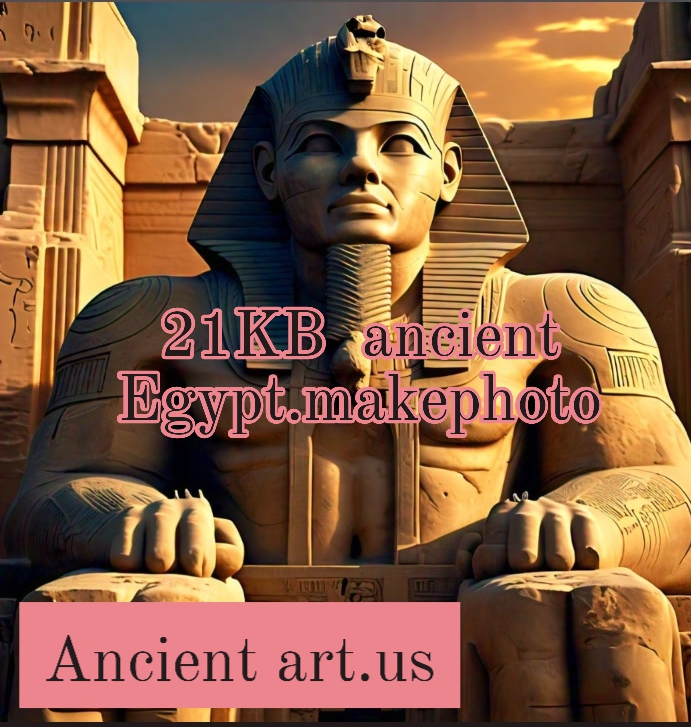Introduction
Ancient Egypt, one of the most iconic and awe-inspiring civilizations in history, has fascinated people for millennia. Spanning thousands of years and leaving behind an enduring legacy, this ancient civilization continues to captivate the imagination of scholars, archaeologists, and people across the world. Its contributions to art, architecture, religion, and science have had a profound and lasting impact on the world.
In this article, we will explore the essential aspects of Ancient Egyptian civilization, its history, culture, technological innovations, and how it still influences modern society today. We will delve into some of the most important milestones and achievements of this remarkable civilization, all while providing a user-friendly and engaging overview.
The Birth of Ancient Egyptian Civilization
The history of Ancient Egypt stretches back over 5,000 years, with its origins dating back to around 3100 BCE. The unification of Upper and Lower Egypt by the first Pharaoh, Narmer (also known as Menes), marks the beginning of the Early Dynastic Period. This era laid the foundation for the development of Egypt’s complex society, religion, and governance.
Egypt was situated along the fertile banks of the Nile River, which provided the necessary resources for agriculture, transportation, and trade. The river’s annual flooding created a rich, fertile soil that allowed for the cultivation of crops such as wheat and barley, feeding the population and enabling Egypt to prosper for centuries.
The Pharaohs and Their Divine Rule
At the heart of Ancient Egypt’s political and social structure were the Pharaohs, the kings who ruled over the land and were believed to be divine intermediaries between the gods and the people. The Pharaohs held absolute power, and their authority was reinforced by religion, which permeated every aspect of Egyptian life.
The Pharaohs were not only political rulers but also religious figures. They were considered to be living gods on Earth, often associated with the gods Horus (the god of the sky) and Ra (the sun god). The belief in divine kingship meant that the Pharaoh was responsible for maintaining cosmic order (known as maat), ensuring the prosperity and stability of the kingdom.
Religion and Beliefs in Ancient Egypt
Religion was an integral part of daily life in Ancient Egypt. The Egyptians believed in a pantheon of gods and goddesses, each governing different aspects of the world and human existence. The most prominent gods included Ra (the sun god), Osiris (the god of the afterlife), Isis (the goddess of magic and motherhood), and Anubis (the god of mummification).
The Egyptians believed in an afterlife where the soul would be judged by Osiris to determine whether it was worthy of eternal life. To ensure a smooth transition into the afterlife, the ancient Egyptians practiced elaborate burial rituals and developed the process of mummification. The pyramids, grand tombs for the Pharaohs, were constructed as monuments to ensure their immortality.
The Legacy of Ancient Egyptian Architecture
One of the most remarkable achievements of Ancient Egypt was its architectural prowess. The Egyptians are perhaps best known for their monumental structures, particularly the pyramids, which have become symbols of their civilization. The most famous of these is the Great Pyramid of Giza, built for Pharaoh Khufu during the Fourth Dynasty.
The pyramids were constructed with immense precision and ingenuity, and their sheer scale continues to amaze visitors and historians alike. Other notable architectural achievements include the temples of Karnak and Luxor, the mortuary temple of Hatshepsut, and the tombs of the Valley of the Kings. These structures were not only impressive in size but also demonstrated the Egyptians’ advanced knowledge of engineering and construction.
The Art and Culture of Ancient Egypt
Ancient Egyptian art is immediately recognizable by its distinct style, which adhered to specific conventions and rules. Egyptian artists followed rigid guidelines to ensure that their work represented the eternal and unchanging nature of the gods and the divine order.
One of the most striking features of Egyptian art is its use of symbolism. For example, the colors used in paintings had specific meanings: red symbolized chaos, blue represented the heavens and water, and green was associated with fertility and rebirth. Egyptian art was often intended to honor the gods, commemorate the Pharaohs, and ensure a successful afterlife.
Music, literature, and dance also played important roles in Egyptian culture. The Book of the Dead, a collection of spells and prayers designed to guide the soul in the afterlife, is one of the most famous examples of Egyptian literature. The Egyptians also created intricate jewelry, pottery, and sculptures that have survived to this day as testaments to their artistic skill and craftsmanship.
Innovations in Science and Technology
The Egyptians were pioneers in many fields, including medicine, mathematics, astronomy, and engineering. Their knowledge of anatomy and surgery was advanced for its time, and many of their medical practices were recorded in ancient texts such as the Ebers Papyrus, which contains information on diseases, treatments, and surgical procedures.
The Egyptians also made significant advancements in mathematics, developing a system of counting based on the number 10 and creating one of the earliest forms of geometry. This was particularly useful in constructing their monumental structures, as it required precise measurements and alignment.
Astronomy was another area in which the Egyptians excelled. They developed a calendar based on the lunar and solar cycles, which allowed them to track the passage of time and plan for the annual flooding of the Nile. The alignment of the pyramids and other structures with the stars also suggests that the Egyptians had a sophisticated understanding of celestial movements.
The Decline and Fall of Ancient Egypt
Despite its many achievements, Ancient Egypt eventually went into decline. The civilization began to weaken during the Third Intermediate Period (1070-664 BCE) due to internal strife, external invasions, and the rise of powerful neighboring empires, such as the Assyrians and Persians.
The Greeks, led by Alexander the Great, conquered Egypt in 332 BCE, and Egypt became part of the Hellenistic world. Under the rule of the Ptolemaic dynasty, founded by Ptolemy I, Egypt enjoyed a period of relative stability. However, this era came to an end when the Roman Empire took control of Egypt in 30 BCE, following the defeat of Cleopatra VII, the last of the Ptolemaic rulers.
The fall of Ancient Egypt marked the end of a civilization that had lasted for over three millennia. However, its cultural and intellectual contributions continue to influence the world today.
Conclusion
Ancient Egypt was a civilization that achieved remarkable feats in art, architecture, science, and religion. The legacy of the Pharaohs, the pyramids, and their complex belief system continues to intrigue and inspire people around the world. Though the civilization eventually fell, the cultural contributions of Ancient Egypt remain deeply woven into the fabric of modern society.
The achievements of the ancient Egyptians laid the foundation for much of what we understand about human history, governance, and knowledge. Today, the study of Ancient Egypt continues to uncover new insights and deepen our appreciation for the incredible civilization that once thrived along the banks of the Nile.
FAQs about Ancient Egypt
1. What was the significance of the Nile River to Ancient Egypt?
The Nile River was essential to the development of Ancient Egypt. It provided water for agriculture, served as a transportation route, and was a source of food through fishing. The annual flooding of the Nile enriched the soil, making it one of the most fertile areas in the ancient world, which supported Egypt’s prosperity.
2. Who were the most famous Pharaohs of Ancient Egypt?
Some of the most famous Pharaohs of Ancient Egypt include Tutankhamun, Ramses II (Ramses the Great), Cleopatra VII, and Khufu (Cheops). These rulers are remembered for their achievements, monumental construction projects, and, in the case of Cleopatra, their involvement in historical events that shaped the future of Egypt.
3. How did the Egyptians mummify bodies?
Mummification was a complex process that involved removing the internal organs, drying the body with natron (a natural salt), and wrapping the body in linen bandages. The process was intended to preserve the body for the afterlife, where the soul would need it to live eternally.
4. What role did religion play in Ancient Egyptian society?
Religion was deeply intertwined with all aspects of Egyptian life. The Pharaohs were considered divine figures, and the gods were believed to control every part of existence. Temples, rituals, and ceremonies were dedicated to honoring the gods and ensuring the Pharaoh’s divine rule.
5. What are some of the key achievements of Ancient Egypt?
Key achievements of Ancient Egypt include the construction of the pyramids, advances in medicine, mathematics, and engineering, the creation of a written script (hieroglyphs), and contributions to art and architecture that continue to influence modern culture.



